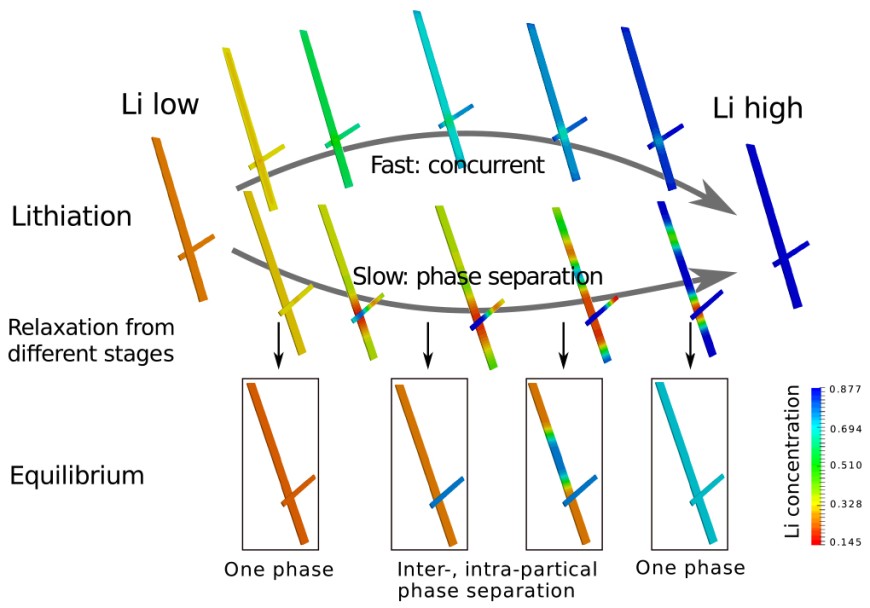Modeling of phase separation across interconnected electrode particles in lithium-ion batteries
New Publication in “RSC Advances”
2017/08/23

Authors: Ying Zhao, Luis R. De Jesus, Peter Stein, Gregory A. Horrocks, Sarbajit Banerjee and Bai-Xiang Xu
Lithium transport and phase separation in and across interconnected electrode particles are investigated in this paper. This paper signifies the influential role of particle size variation on battery performance with phase-separating electrodes. In this work, a model is developed which accounts for lithium transport in the particles, phase separation, and interface reactions across the particle network. The implementation in 3D is carried out using the B-spline based finite cell method for a straightforward treatment of the Cahn–Hilliard equation and a flexible representation of particle geometry. Representative examples based on scanning transmission X-ray microscopy (STXM) images are simulated to discuss the factors that will influence phase separation during non-equilibrium lithiation and delithiation, as well as relaxation towards equilibrium. The simulations reveal that particles with a slight advance during (de-) lithiation at the beginning will strengthen their advance at the expense of neighboring particles, in a “winner-takes-all” fashion. Moreover, rapid reaction can suppress phase separation, both inside a single particle and across the particle network. Lastly, both particle size and size variation in electrodes composed of phase-separating materials ought to be small to avoid intra- and inter-particle phase separation. This study can serve as a guide for the design of battery electrodes composed of phaseseparating materials.



